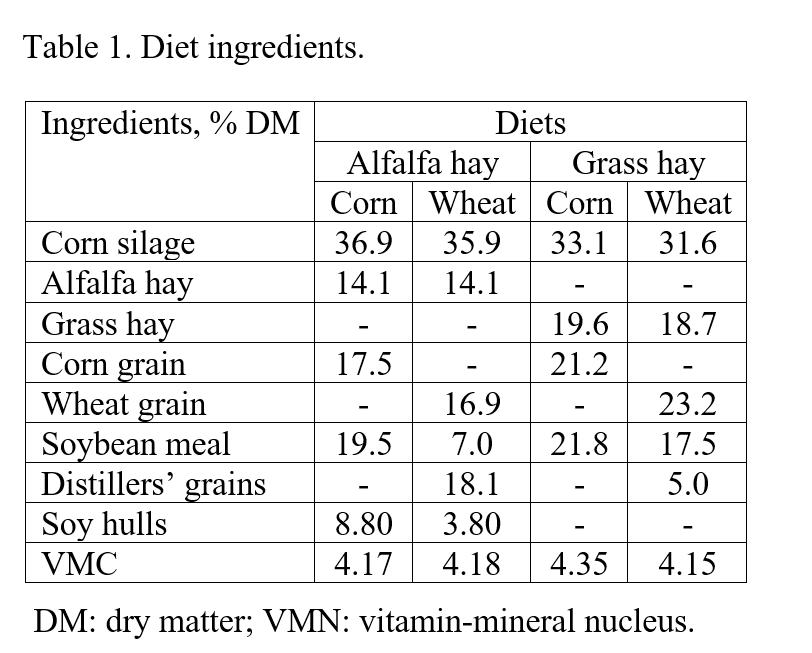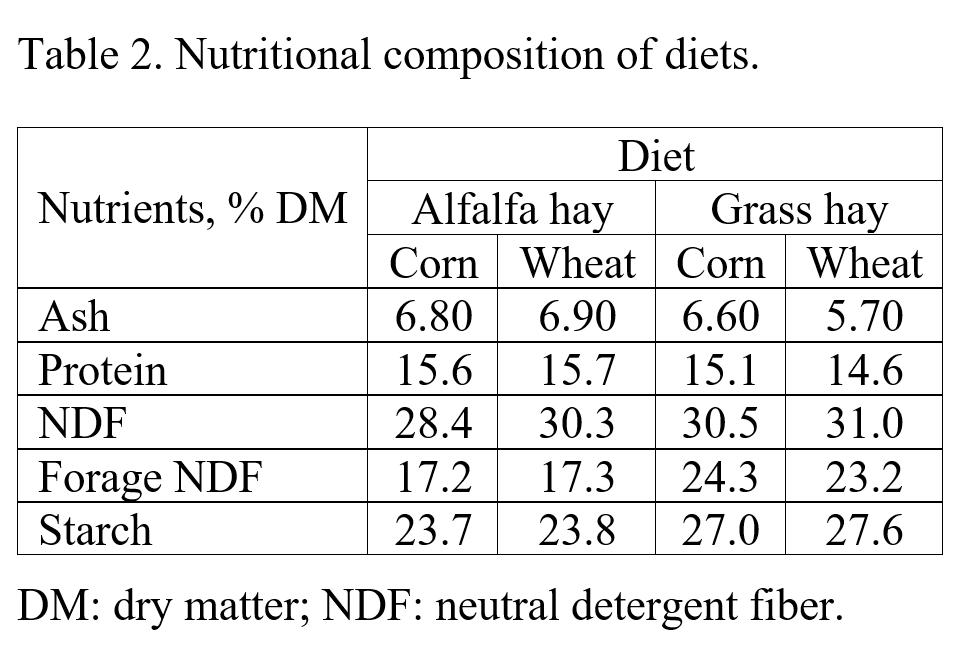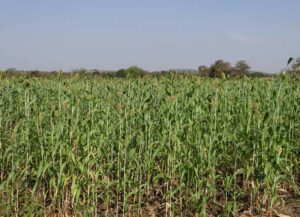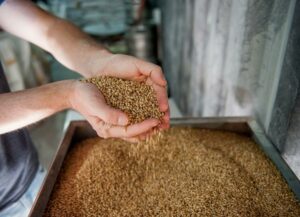María Villagrasa & Fernando Diaz
Feed is one of the highest costs associated with milk production, so it needs to be optimized to improve farm profitability. To achieve optimal feeding, the right combination of forage and concentrates needs to be used.
Concentrates consist mostly of cereal grains which constitute traditionally a portion of the dairy cow ration. Their high energy content and nutrient availability make them very suitable feeds for high-production animals.
The energy of cereals is mainly due to their starch content. This carbohydrate degrades in the rumen into short-chain fatty acids, although the degree and rate of degradation depends on the type of cereal. Wheat, for example, degrades very fast so if supplied in high amounts all at once can cause pH to rapidly decrease and lead to ruminal acidosis. Corn, on the other hand, breaks down much more slowly so a higher proportion can reach the small intestine where it is digested and absorbed in the form of glucose.
Differences in the ruminal degradability of grain starch can affect the concentration of milk fat. For example, some research indicates that replacing corn kernels with wheat grain in dairy cow diets reduces milk fat production, although there are not always differences in energy-corrected milk production.
To verify how the different types of cereals and hay affected the productivity of high-production cows, a study was conducted (Ferreira et al., 2020) in which cows were fed diets containing corn or wheat.
A total of 24 Holstein cows were divided into four groups that received four different diets in the form of total mixed rations. Each serving contained alfalfa hay or grass hay as a source of forage and corn or wheat as the grain source. Corn silage was the forage with the highest concentration in each diet (see table 1).

In addition to the ingredients indicated the ration had soybean meal, soybean hulls, corn distillers’ grains with solubles, and minerals, vitamins and additives.The nutritional composition of the diets is in Table 2.

Table 2 shows an important difference in forage NDF between alfalfa hay-based diets (17.3%) and grass hay (23.8%). This difference was attributed to the different proportions of hay in the diets (14.1 and 19.2% for alfalfa hay and grass hay, respectively) and the different NDF concentrations in hay (44.6 and 75.0%, alfalfa vs. grass).
Starch concentration was also higher in diets based on grass hay (27.3%) compared to alfalfa hay (23.7%). Protein concentration however was higher in alfalfa hay-based diets than in grass diets (15.6% vs. 14.8%). There was also a difference in protein concentration between corn (15.1%) and wheat (14.6%) in grass hay-based diets.
Cows fed alfalfa hay had greater DM intake
The type of grain did not influence DM intake, which was affected by forage type, with the cows fed alfalfa hay consuming more DM than those on grass hay (27.0 vs. 24.4 kg/day). This difference was probably due to the different NDF concentrations in the hay. By including more fibrous hay, such as grass hay in this study, ruminal retention times of fodder particles probably increased which would decrease DM intake.
Milk production increased in wheat-fed cows
Cows receiving wheat grain produced more milk than those fed corn, both in alfalfa hay-based diets (48.7 vs. 46.3 kg/day) and grass hay-based diets (45.1 vs. 44.3 kg/day). However, when production was adjusted for energy-corrected milk, cows consuming corn produced more milk than those receiving wheat (51.3 vs. 49.9 kg/day with alfalfa hay and 49.4 vs 47.5 kg/day with grass hay).
Milk fat concentration was higher in corn-fed cows over wheat-fed cows, both in alfalfa hay-based diets (4.22 vs. 3.56%) and grass hay-based (4.49 vs. 3.95%). Milk fat yield was also higher in cows that ate corn compared to wheat-fed cows (1.96 vs. 1.75 kg/day with alfalfa hay and 1.93 vs 1.74 kg/day in grass hay).
Similarly, cows fed wheat produced more milk protein than corn-fed cows in both alfalfa hay-based (1.47 vs. 1.40 kg/day) and grass hay (1.32 vs. 1.30 kg/day).
Milk urea nitrogen (MUN) concentration was higher in corn-fed cows compared to wheat-fed cows in alfalfa hay-based diets (13.2 vs. 9.8 mg/dL). In diets with grass hay, however, MUN was not affected by grain type (14.5 mg/dL).
Conclusions
The main findings of this study were as follows:
- Corn-fed cows produced more energy-corrected milk than wheat-fed cows.
- Milk fat production was higher in corn-fed cows relative to wheat and alfalfa hay over grass hay.
- Cows fed alfalfa hay consumed more DM and produced more milk than those receiving grass hay.
Reference
Ferreira, Gonzalo & Teets, Christy. (2020). Performance and income over feed costs when feeding alfalfa or grass hays and corn or wheat grains to high-producing dairy cows. Applied Animal Science. 36. 583-591. 10.15232/aas.2020-02023.
© 2020 Dairy Knowledge Center. All Rights Reserved.









